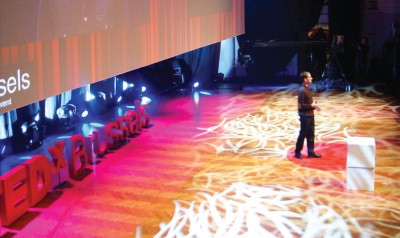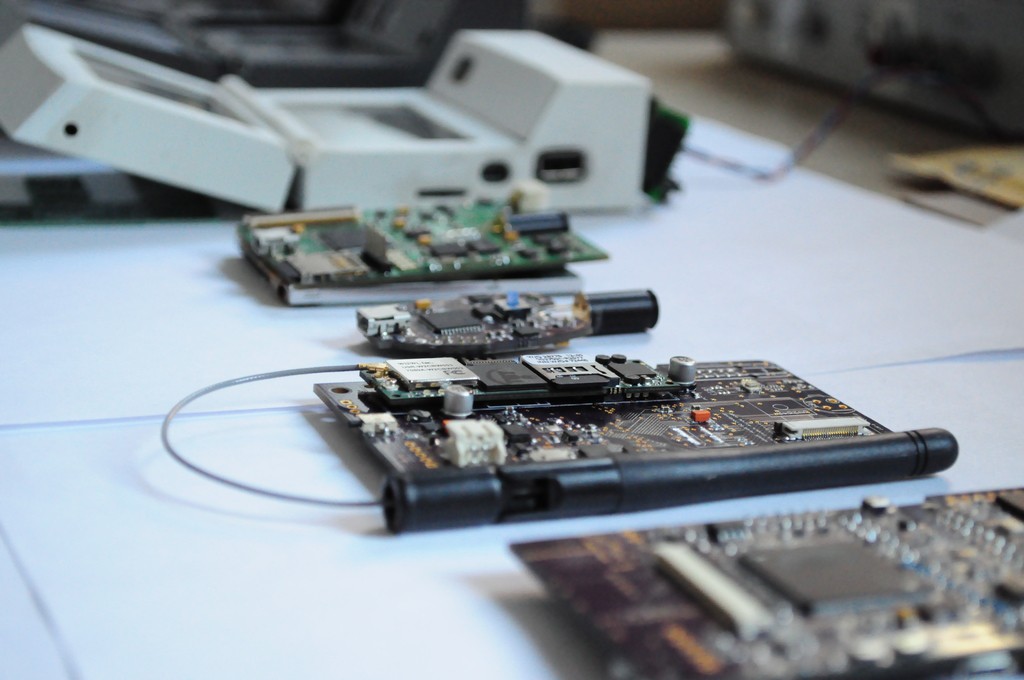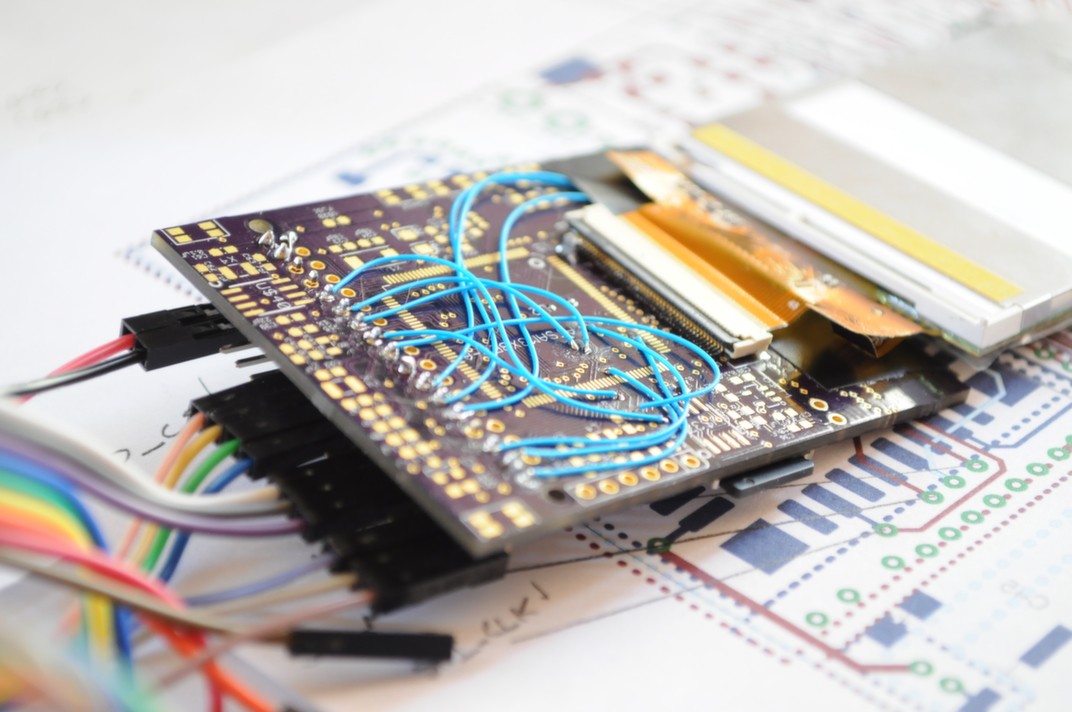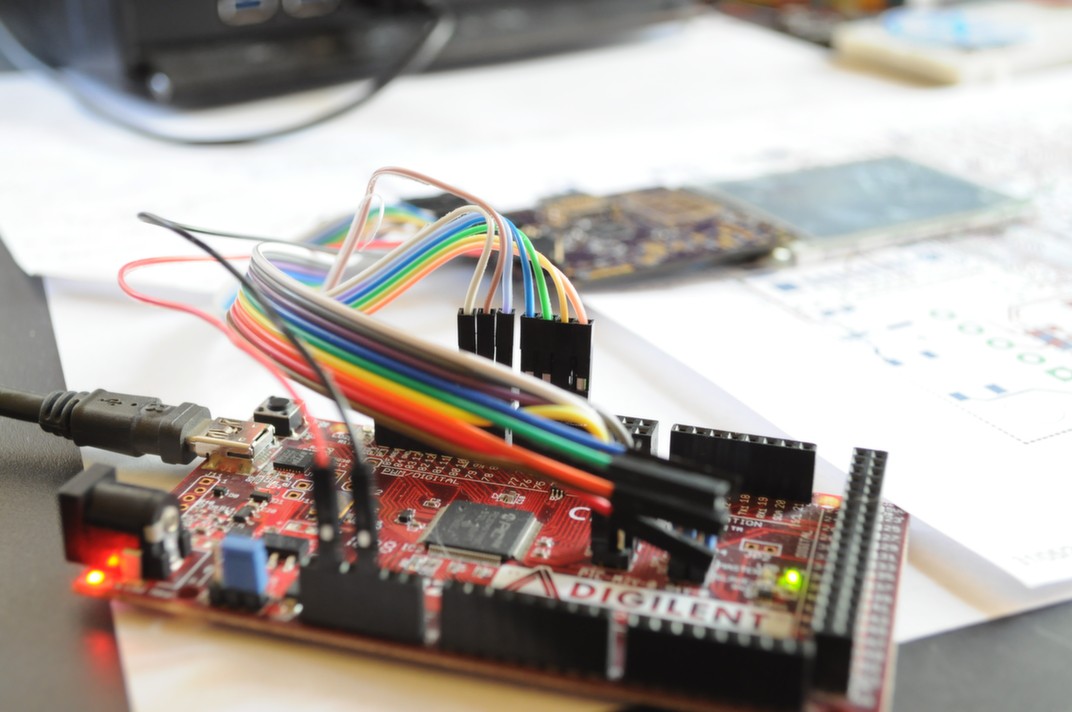I think it'd make a wonderful story to say that the fellow who designed real science tricorders made it into space, and so I've started the next chapter in my project.
Introduction
Two years ago I introduced the Open Source Science Tricorders, which are handheld scientific measurement and visualization tools that can sense a bunch of things around them. They're basically real-world devices inspired by the fictitious devices used on the television series Star Trek. Where the devices used on the TV show were plot devices that allowed the science team to measure all sorts of things like neutron fields from stars or warp field distortions, my open source science tricorders also put nearly a dozen different sensing modalities into a single handheld device -- sensing a variety of atmospheric measurements (such as atmospheric temperature, pressure, or humidity), electromagnetic properties (such as magnetic fields, light intensity, colour, linear polarization, and IR temperature), and spatial measurements (including ultrasonic distance, GPS location, and an inertial measurement unit with accelerometers and gyros). The schematics, diagrams, documentation, pictures, and other source files were published on the Open Source Science Tricorder project website.
The reception was positively overwhelming. In just over a day around 100,000 people had come to the website and viewed the video. My inbox overflowed with people who loved the project, who wanted their own science tricorder to do citizen science, who wanted to contribute, as well as absolutely interesting and knowledgeable folks getting in touch. I was incredibly encouraged by the community enthusiasm, and gave a bunch of talks about open source science tricorders and their potential for science education.

Probably the most unreal of those public outreach talks was at TEDxBrussels, where I was on the bill with Woz, astronaut Yvonne Cagle, fellow maker Mitch Altman, and tons of other incredibly talented folks. As an academic I'm used to giving technical talks or lectures infront of a hundred or so folks, but the energy of standing infront of 2,200 people in one of the world's oldest opera houses was an incredible experience.
Where are we, and where are we going?

A bit of background -- above, we can see six different prototypes of the open source science tricorder. From top to bottom:
- The PIC powered Mark 1
- The Linux-powered dual OLED Mark 2
- The prototype Mark 3, an experiment in making something in a form factor like a modern phone, with only a single screen, and swapable sensor boards.
- The small prototype Mark 4, a bluetooth-connected "key fob" form factor with only a few sensors. This was largely an experiment in sensor fusion designed to make low-cost thermal images (some of these are in the TEDxBrussels talk)
- The prototype Mark 5a, which returned to having a broad array of onboard sensing capabilities, and a Linux-powered processor. WiFi issues made continuing development difficult.
- The prototype Mark 5b Arducorder, an experiment in creating a platform for sensing that is extremely accessible for beginners and advanced users alike, allowing for easy reprogramming and community hardware development. While most of the sensing components work fine, there are some issues with the new bleeding-edge display hardware, and (because of this novel hardware) not many other working examples or opportunities for community support just yet.
Unfortunately even the Mark 5b Arducorder was a bit ambitious, and used a variety of brand-new release parts and a completely different processor than I'm used to. As it stands, it would require a major redesign to get it functional and meet the design philosophy and goals, and one might as well take a step back and redesign things to be a bit simpler, with a higher chance of success.
Some pictures of the Mark5b last weekend, during development:

Finally getting the FT800 and 2.8" TFT in RGB mode to work on the Mark 5b Arducorder

Which took a little bit of hot-wiring...

And using a completely different board. Here, the ChipKit MAX32 with a PIC32MX microcontroller is connected to the SPI bus, where it can communicate with the FT800 display controller, the 2.8" TFT display, and the SD card.
Supporting Projects
I usually try to have a few different projects on the go -- one long term, one short term, and one somewhere in between. When you get burned out on one and need a change of pace, you can switch to another and still be productive, innovative, and pick up a bunch of new skills, which is better than spending a few off weeks practicing your web browsing skills.

The most recent of these projects is the Open Source Computed Tomography Scanner (or Open CT Scanner), which is an inexpensive desktop-sized CT scanner that I designed to become more hands-on familiar with computed imagery, as well as try my hand at non-traditional design elements and radically reduce the cost of a conventional device by making it entirely with rapid prototyping tools (in this case, a laser cutter). The project was recently featured in the homebrew section of Make Magazine Volume 38, which was really fantastic. This project also had a lot of hands-on time and experience with radiation sensing, and involved modifying an off-the-shelf sensor to be much more efficient -- something that will benefit the next open source science tricorder.

Earlier in the year, I also designed something I've been dreaming about since the Mark 1 -- a tiny, embedded visible light spectrometer. Spectrometers are used for chemical analysis or to determine the composition of an object, and there's been a lot of buzz the past few years about designing tiny spectrometers on a chip that can fit inside phones or other mobile devices. Still, there are few offerings that you can purchase, and I'm not aware of any that are at all inexpensive. There's definitely a lot of interest in this space though, and there are a bunch of folks that make enormous papercraft spectroscopes to attach to the cameras on their phones to begin to look at this.
The Open 3D-Printable Mini Spectrometer tries to address these issues by having a complete miniature visible light spectrometer suitable for embedded systems. With a digital interface you can easily connect it up to a microcontroller (like an Arduino), and away you go. It's also comparatively very inexpensive, with a parts cost of around $20. The entire spectrometer is around 1 x 2 x 2cm in volume, making it small enough to fit inside an open source science tricorder!
Where we're going -- the vision, and importance of the open source community
Something that I've not discussed before is the idea of a community, and how I learned it's importance to an open source project. When I released the source to the first two science tricorders, I poured a great deal of effort into cleaning and documenting the source files, building a website full of additional documentation and pictures, and filming a short video that would get folks really excited about them. It all worked fantastically, and the scope of the reach was positively overwhelming. But I'd failed to take into account that no matter how excited folks were, they still had to have a great deal of fairly advanced technical skills both in hardware and embedded programming in order to build their own, let alone contribute to the project. And so rather than form a community of open source science tricorder builders and developers, tinkerers, citizen scientists, and curious folks like I'd hoped, I was instead successful at forming a giant group of folks who are incredibly excited about science tricorders and want to be in that community, but need a little help.
It was a big learning experience for me. Where I'd designed the first two science tricorders for myself, my design focus had to shift -- I'd design them for the community. Infact, if I designed them right, they'd help build the community, by virtue of getting folks excited about learning, sensing, visualization, and being accessible. I think this is why it's taking so long to make a prototype that feels right -- I could always put together something designed for myself, again, since dealing with scale and the scope of accessibility is such a difficult task to balance -- but that wouldn't further the mission, and wouldn't build a community.
And so here, we set out together to document the design process of a next-generation, accessible open source science tricorder with the pragmatic aspects of having to keep it simple and low-risk enough to complete in a few months. There's something about a fixed deadline that helps take something from a research project to a complete functioning device, and with a bunch of parts already on their way, I'm excited to get to the design process, and document it here for other Makers, tinkerers, students, and scientists to learn from.
Next up, we'll cover the conceptual illustrations, scale drawings, and likely initial hardware specifications.
Thanks for reading!
About the Author

Peter Jansen is a Postdoctoral Research Fellow in artificial intelligence at the University of Arizona, where he works to try to teach computers how to learn and infer with concepts and language. He has an interdisciplinary background (a fancy academic word, meaning that he likes lots of things) in cognitive artificial intelligence, computational neuroscience, astrophysics, optics, and signal processing. As the founder of the Open Source Science Tricorder project and a number of other open projects, he works to further science educational outreach and ground science education through sensing.
 peter jansen
peter jansen
Discussions
Become a Hackaday.io Member
Create an account to leave a comment. Already have an account? Log In.